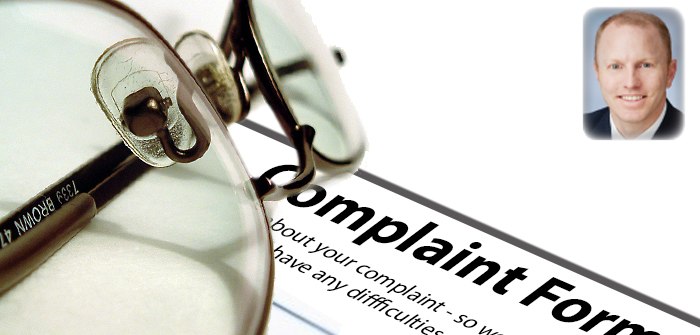We have all heard the phrase “the best defense is a good offense.” The military theorist Carl von Clausewitz is often credited with coining this expression, but today we most often hear it used in the context of sports. This phrase also serves as great advice for employers faced with employee complaints. The best defense against employee complaints of harassment, retaliation or misconduct is a good investigation.
When an employer receives a complaint, it must first assess whether there is a need to conduct an investigation and/or to implement protective measures. If the complaint involves allegations of harassment, retaliation or serious employee misconduct, then the Employer should investigate. In the event of less or complaints involving, for example, an employee just “blowing off steam” about a co-worker, a full investigation may not be necessary. Employers should consider protective measures (such as administrative leave or reassignment) if, in the absence of such measures, there is likely to be disruptions to an impartial investigation.
Once the decision is made to investigate, an employer must determine the posture of the investigation. A workplace investigation can serve as both a shield and sword. Employers may shield themselves against liability from some claims of harassment by raising an affirmative defense known as the Faragher/Ellerth defense. In order to assert this defense against liability, the employer must exercise care to prevent and promptly correct the alleged harassment. Written policies provide good evidence of an employer’s efforts to prevent harassment, and such policies should state the employer’s commitment to taking complaints seriously, explain the reporting process, and promise no retaliation for making complaints.
Prompt correction requires an employer to conduct a thorough and fair investigation, and take reasonable action to end and prevent the alleged wrongful conduct from occurring again.
A workplace investigation also serves as a sword to address employee misconduct by providing employers with a solid record on which they may base disciplinary action. An employer should promptly investigate employee misconduct to limit the wrongdoer’s opportunity to launch a pre-emptive strike by engaging in protected conduct, such as filing a whistleblower complaint, before the employer takes action. Additionally, the failure to take immediate action creates the impression that the alleged misconduct is not a serious offense, which may later be used against the Employer if termination is based on the misconduct.
A thorough investigation into misconduct will include interviewing the employee. While such an interview presents a chance for the employee to tell his side of the story, it also provides the employer the ability to gain admissions from the employee and to lock the employee into a story early in the process. After the investigation posture is set, the employer selects an individual to serve as the investigator.
An employer’s selection of an investigator will be scrutinized as evidence of an Employer’s commitment to the complaint. A good investigator is someone who is free from perceived bias, is able to start immediately, is well trained and versed in the subject matter of the complaint, and has experience conducting investigations. For some complaints, an employer may be able to use an employee to serve as the investigator; however, other, more serious complaints warrant selecting an investigator from outside the organization.
It is important for the employer to clearly communicate the scope and procedures for the investigation. In order to retain discretion to determine whether a violation occurred, the Employer should limit the scope to a fact-finding investigation. Failure to do so may very well tie the employer’s hands and force the employer to accept the conclusions of the investigator. The employer and the investigator should also determine whether the interviews will be recorded, what facilities/resources are available to the investigator and the format of the investigation report.
Once the scope and procedures of the investigation are established, the employer should turn the reigns over to the investigator. Too much influence and involvement has the potential to result in allegations of a sham investigation where the investigation is unduly influenced by the Employer. Allegations of a sham investigation can destroy the credibility of the entire investigation.
The investigator’s finished product should be a written report for the employer. The report is prepared to assist the Employer in making a solid decision regarding what, if any, action should be taken in response to the complaint. Based on the report, the employer should take action consistent with the investigator’s factual findings. If corrective action will be taken, the Employer should inform the complainant that action will be taken. If no action will be taken, the Employer should inform the complainant the situation will be monitored and warn the subject of the investigation that retaliation may result in discipline.
By following the steps outlined above, employers will achieve a prompt, thorough, fairand effective investigation. This process requires an investment of time, energy and money, but investing in a good offense is the best defense against workplace complaints.
Kyle Abraham is an attorney at Barran Liebman LLP in Portland where he represents employers in traditional labor and employment law matters. Contact him at 503-276-2132 or kabraham@barran.com.





